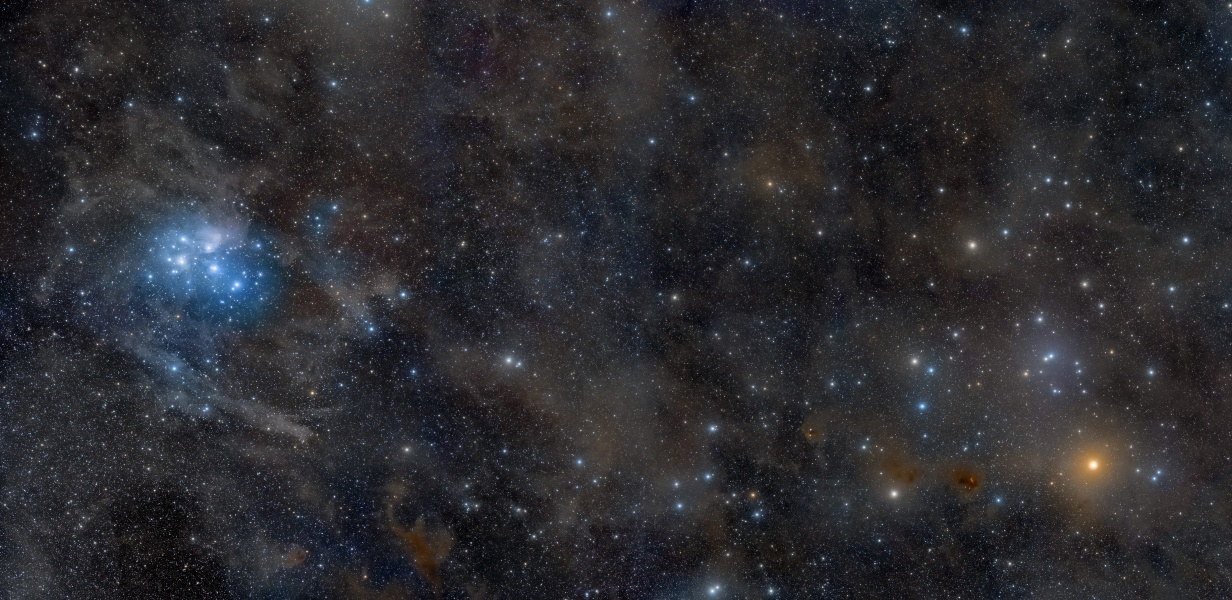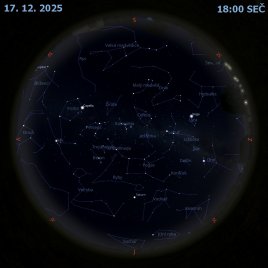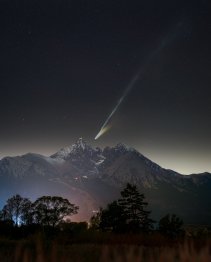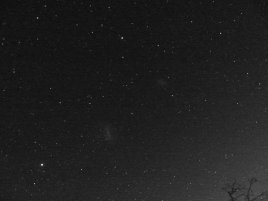Od Plejád k Hyádám

Uznání a copyright: Rogelio Bernal Andreo
Tento kosmický pohled
zabírá v
souhvězdí Býka
(Taurus) téměř 20 stupňů. Začíná u Plejád a končí u Hyád, což jsou dvě nejznámější hvězdokupy na pozemské obloze.
Nádherná hvězdokupa Plejády
vlevo je asi 400 světelných let daleko. Na dobře známém obrázku hvězdy v této kupě svítí skrz prachová mračna, která rozptylují modré světlo hvězd.
Hvězdokupa Hyády ve tvaru V vpravo je ve srovnání s kompaktními Plejádami více roztažená a nachází se mnohem blíže ve vzdálenosti
150 světelných let.
Zdá se, jako by
hvězdy v Hyádách
byly ukotveny
jasným Aldebaranem,
rudým obrem, který vypadá žlutý. Ovšem Aldebaran je ve skutečnosti jenom 65 světelných let daleko a do Hyád se promítá jen náhodou.
Na této pozoruhodné mozaice z 12 snímků jsou u okraje
molekulárního mračna v Býku
vidět i slabá
prachová mračna.
u okraje
molekulárního mračna v Býku
Na širokoúhlém pohledu je asi 4 stupně od Aldebaranu vidět i mladistvá hvězda
T Tauri a Hindsova
proměnná mlhovina.
Oprava: Na správný způsob psaní názvu hvězdokupy Hyády upozornil Tom Brázdil
NASA Official: Phillip Newman Specific rights apply. NASA Web Privacy Policy and Important Notices
A service of: ASD at NASA / GSFC & Michigan Tech. U.
Odkaz na originální APOD


